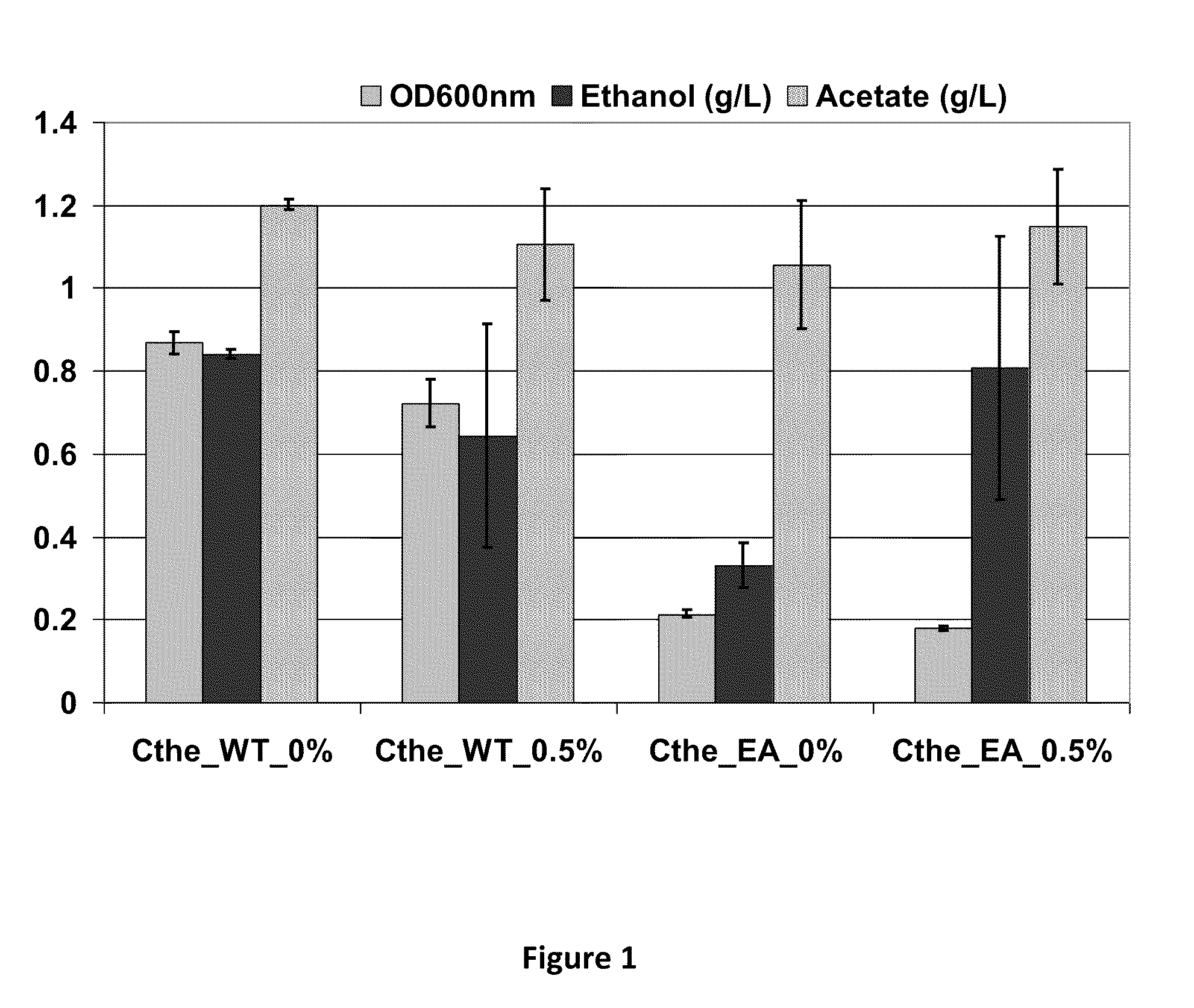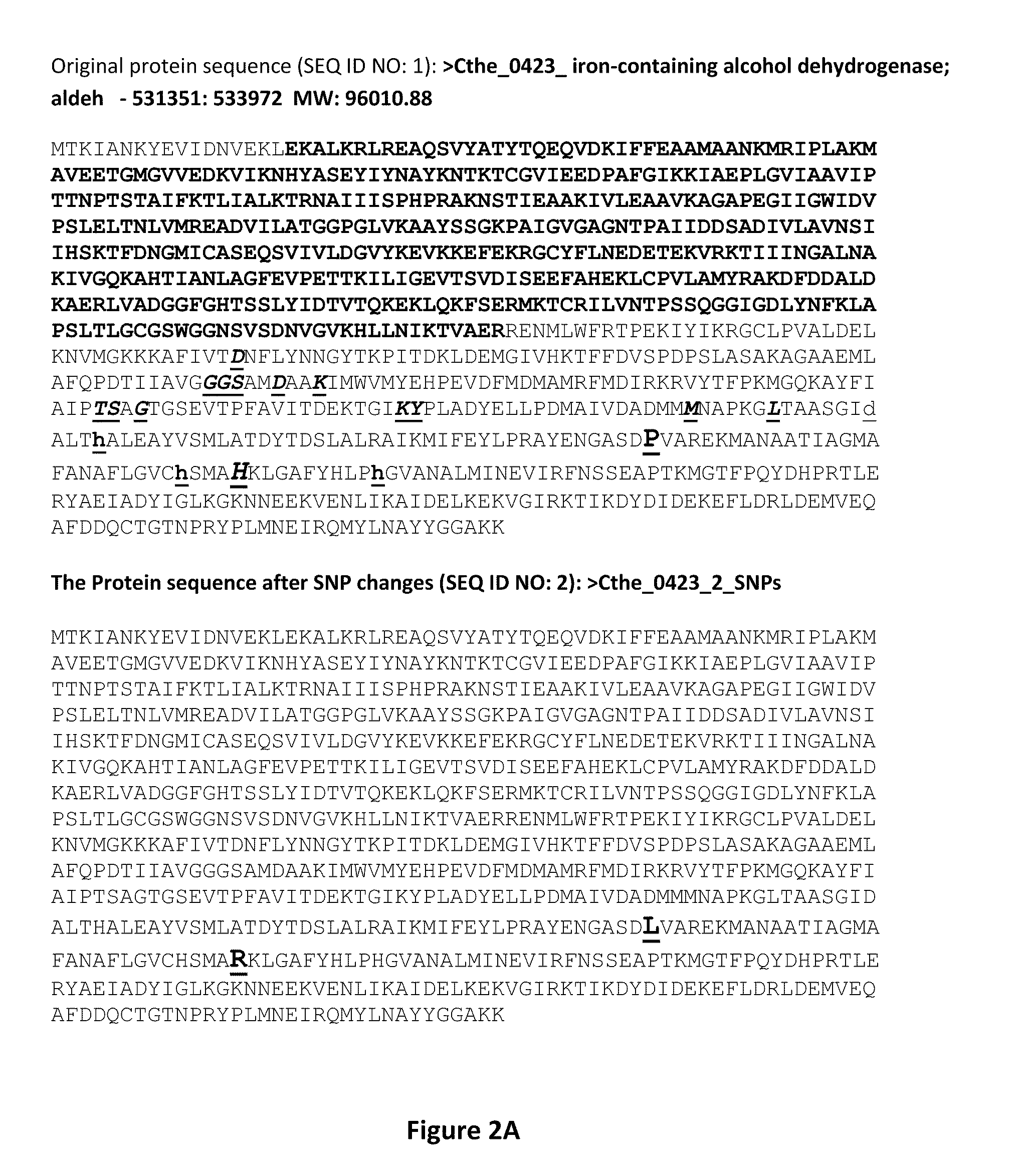Nucleic Acid Molecules Conferring Enhanced Ethanol Tolerance And Microorganisms Having Enhanced Tolerance To Ethanol
- Summary
- Abstract
- Description
- Claims
- Application Information
AI Technical Summary
Benefits of technology
Problems solved by technology
Method used
Image
Examples
example 1
[0082]The following examples demonstrate that mutations within a single gene provided a microorganism with enhanced tolerance to ethanol.
[0083]An ethanol tolerant C. thermocellum strain (also referred in this example as an ethanol-adapted strain or a mutant strain) was provided as a gift from Prof. Herbert J. Strobel at University of Kentucky, Lexington, Ky. This strain was derived from C. thermocellum strain ATCC 27405 according to an ethanol adaptation procedure described by Williams et al. (2007), supra.
[0084]Strain ATCC 27405 typically could not grow when the exogenous ethanol concentration was greater than 1% (w / v), while the ethanol-adapted strain tolerated at least ethanol at 5%. Wild type cells had a faster growth rate and higher cell density as compared to the ethanol adapted strain in the absence of ethanol. However, in the presence of even small amounts of ethanol, the growth rate and cell density of wild type cultures dramatically decreased, while relatively little negat...
example 2
Mutant Selection and Characterization of Additional Ethanol-Tolerant Strains
[0090]Strain and culture conditions. C. thermocellum ATCC 27405 was obtained from the American Type Culture Collection (Manassas, Va.). A single colony was isolated and denoted as wild-type (WT). Chemically defined Media for Thermophilic Clostridia (MTC) medium was prepared according to the concentrations listed in Table 2. All chemicals were reagent grade and obtained from Sigma (St. Louis, Mo.), unless indicated otherwise. Solution A contained either Avicel PH105 (FMC Biopolymer, Philadelphia, Pa.) or cellobiose supplemented with appropriate amounts of DI water (Milli-Q). Solution B, C, D, E, and F were injected aseptically into Solution A using a syringe. Prior to combining all the solutions, they were purged with N2 (Airgas Northeast, White River Junction, Vt.) and sterilized by autoclaving at 121° C. for 45 minutes except for Solution A with cellobiose which was autoclaved for 25 minutes.
TABLE 2Recipe o...
PUM
| Property | Measurement | Unit |
|---|---|---|
| Time | aaaaa | aaaaa |
| Time | aaaaa | aaaaa |
| Time | aaaaa | aaaaa |
Abstract
Description
Claims
Application Information
 Login to View More
Login to View More - R&D Engineer
- R&D Manager
- IP Professional
- Industry Leading Data Capabilities
- Powerful AI technology
- Patent DNA Extraction
Browse by: Latest US Patents, China's latest patents, Technical Efficacy Thesaurus, Application Domain, Technology Topic, Popular Technical Reports.
© 2024 PatSnap. All rights reserved.Legal|Privacy policy|Modern Slavery Act Transparency Statement|Sitemap|About US| Contact US: help@patsnap.com










